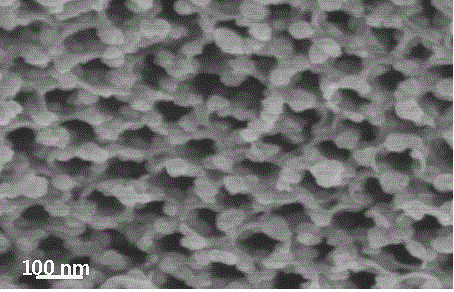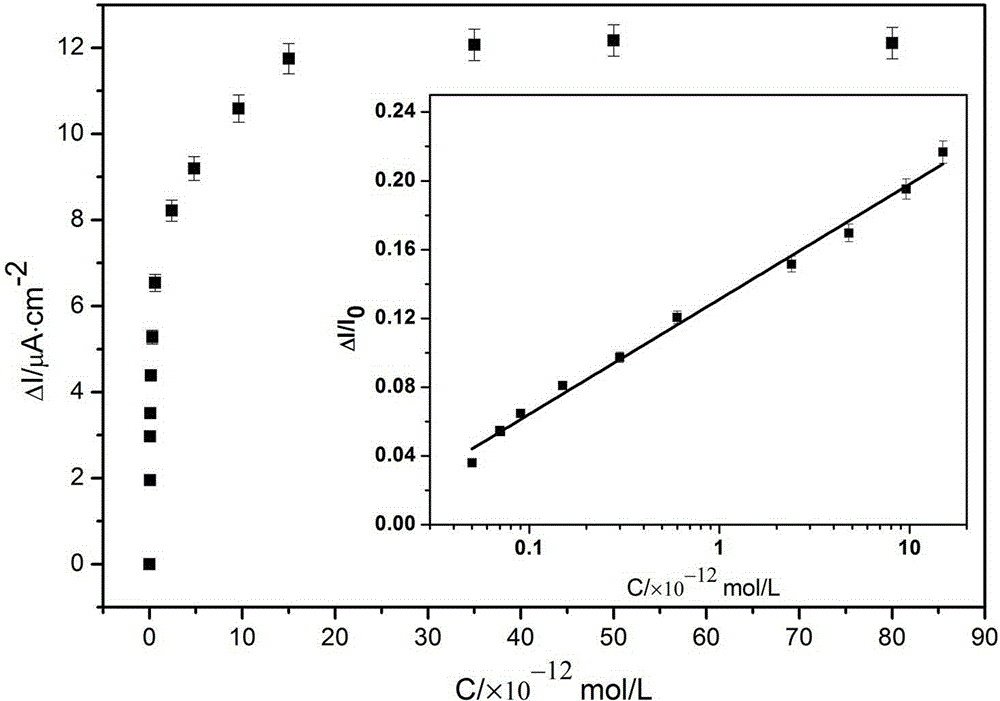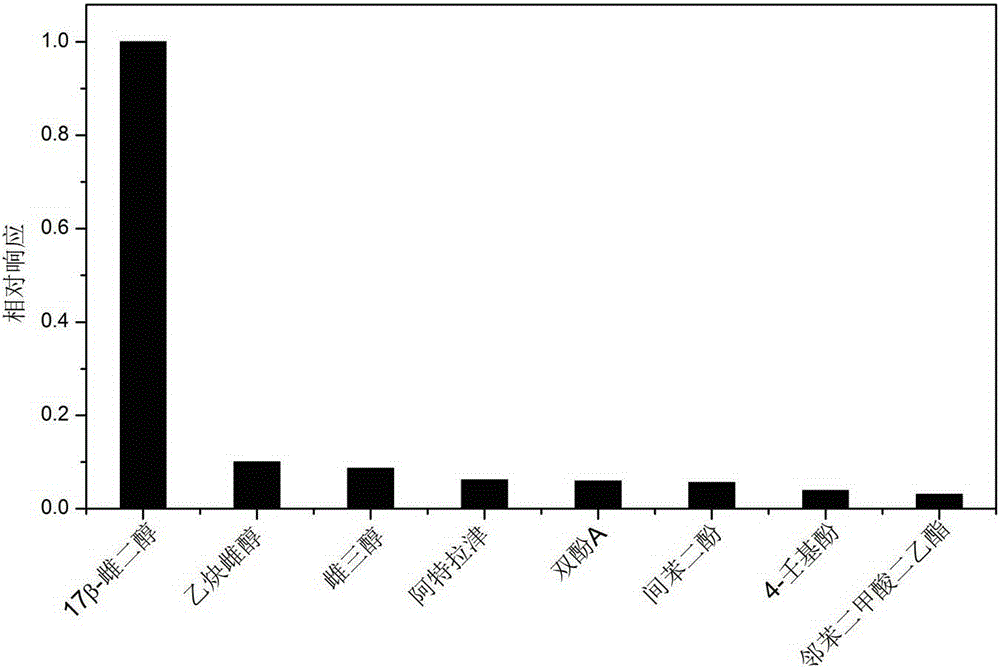A preparation method of photoelectric aptasensor for detecting 17β-estradiol
An aptamer sensor, estradiol technology, applied in the direction of material electrochemical variables, etc., can solve the problems of limiting direct application, inactivation of biomolecules, etc., and achieve good biocompatibility, high sensitivity, and improved selectivity
- Summary
- Abstract
- Description
- Claims
- Application Information
AI Technical Summary
Problems solved by technology
Method used
Image
Examples
Embodiment 1
[0026] A highly sensitive and selective photoaptamer sensor for 17β-estradiol constructed on CdSeNPs-TiO 2 NTs as the substrate, the aptamer of 17β-estradiol was modified on CdSeNPs-TiO 2 Inside and outside of the tube of NTs. The specific production process is as follows:
[0027] (1) The titanium plate is mechanically polished with sandpaper of different fineness in turn, and then placed in double distilled water and ethanol solution for ultrasonic cleaning for 5-10 minutes respectively. Before anodization, the titanium plate was etched with 18% HCl for 10 minutes, and then placed in a two-electrode system for anodization. The platinum plate was used as the cathode, and the titanium plate was used as the anode. The distance between the two electrodes was 1 cm, and the applied cell voltage was 40V. When the temperature is 25°C, anodize for 2 to 3 hours. The electrolyte contains 0.3wt%NH 4 F and 3.0Vol%H 2 O solution in ethylene glycol. Anodized TiO 2 NTs were rinsed wi...
Embodiment 2
[0031] After preparing 1mmol / L 17β-estradiol stock solution with absolute ethanol as solvent, it was diluted with 0.1mol / LPBS buffer solution (pH7.41) to prepare a series of 17β-estradiol standard solutions with different concentrations. A buffer solution of 0.1mol / LPBS (pH7.41) and 0.1mol / L ascorbic acid (AA) is used as the electrolyte, where AA is used as an electron sacrificial agent. At a voltage of 0.0 V, the electrodes were kept 5 cm from the visible light source. CdSeNPs-TiO modified with nucleic acid aptamers 2 NTs is the working electrode, the saturated calomel electrode is the reference electrode, and the platinum wire is the counter electrode. In the three-electrode system, when different concentrations of 17β-estradiol are added to the electrochemical cell, each sample needs to be reacted for 30 minutes and then amperometric i-t curve determination. Due to the specific recognition of the aptamer and its target substance, 17β-estradiol is captured on the electrode...
Embodiment 3
[0033] CdSeNPs-TiO modified with 17β-estradiol aptamer 2 NTs were placed in 0.1mol / LPBS+0.1mol / LAA (pH7.41) as electrolyte, and 1.0×10 -12 mol / L17β-estradiol was mixed with different concentrations of interfering substances in pairs for determination. The interference of six environmental endocrine disruptors, ethinyl estradiol, estriol, nonylphenol, resorcinol, bisphenol A, atrazine and diethyl phthalate, on the determination of 17β-estradiol was investigated experiment. Using the test conditions in Example 2, measure the photocurrent response, the research results show that the influence caused by the photocurrent of other interfering substance 17β-estradiol which is 100 times the concentration of 7β-estradiol is less than 10.0%, such as image 3 shown. It can be seen that the prepared aptasensor has high selectivity to 17β-estradiol, and other six environmental endocrines with similar structures or coexisting with 17β-estradiol do not interfere with its determination.
PUM
 Login to View More
Login to View More Abstract
Description
Claims
Application Information
 Login to View More
Login to View More - R&D
- Intellectual Property
- Life Sciences
- Materials
- Tech Scout
- Unparalleled Data Quality
- Higher Quality Content
- 60% Fewer Hallucinations
Browse by: Latest US Patents, China's latest patents, Technical Efficacy Thesaurus, Application Domain, Technology Topic, Popular Technical Reports.
© 2025 PatSnap. All rights reserved.Legal|Privacy policy|Modern Slavery Act Transparency Statement|Sitemap|About US| Contact US: help@patsnap.com



